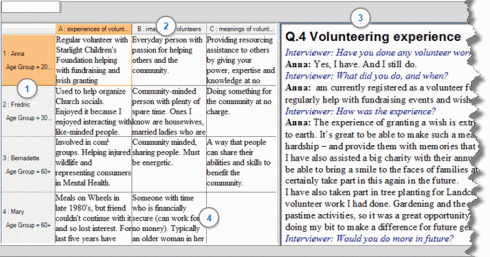I used to think the latter.
In an ideal world, one is assigned to two or three supervisor’s right at the beginning of one’s PhD, who would see you through to the very end. Most of us know however, that doing a PhD never really goes perfectly to plan. I know now this is just another part of the fun (!)
I have changed my main supervisor 3 times now – through no fault of my own I hasten to add. Well at least as far as I know. I ‘lost’ my supervisors simply due to them leaving for pastures new. Although I had the option of continuing and being supervised from a distant, I decided (after thinking long and hard) that this wasn’t something that I felt would be good for me. Thankfully, maintaining a certain level of stability, one co-supervisor has stayed with me from the beginning. I have to appreciate also, that having 3 different principle supervisors has also been a tough for her too – but hats off to her, she is still with me!
Admittedly, this has been far from easy as I have noted previously in a previous blog post. Indeed, I am not ashamed to admit that I have shed many tears over it. I admit that for totally selfish reasons, I felt abandoned and often felt I was being forced to take a path that wasn’t on my agenda.
My first supervisor change was extremely difficult as my new supervisors challenged me in a way I hadn’t been challenged before. I was unable to defend many things. This then led me down a backwards path for quite a long time. In time however, I realised that I needed to be led down this path in order to be able to move forward.
My second supervisor change was daunting, as I expected to be led onto this backwards path again. This however, was not the case. Sure I have been challenged, but this time it was welcome. I was now sure of what I had done, why I had done it, how I had done it and how it has contributed, therefore the challenging questions were welcome. Yes, of course, the reins have been pulled a little while I re-think some things and go back and forth to revisit work, but I can see how much stronger this is making my work. Although…. My literature reviews are a pain in the ass – they have always been a pain in the ass. I thought in time, my literature reviews and I would develop a mutual understanding, but it looks doubtful….
Anyway, I digress….. Now that the dust has settled, I look back upon my supervision changes and challenges and have come up with this:
- Supervision is subjective – accept that. However, there is more than one way to skin a cat… That said, also respect each supervisor in their own right. More about styles of supervision here
- Set ground rules together: What was expected from previous supervisors may be different to what your new supervisor expects. Similarly, establish what your supervisor will do for you in terms of reviewing work, supervision sessions etc. It may not be the same as your previous supervisor
- Don’t say “well my last supervisor said……”
- Embrace differences of opinion (no matter how hard this is). If your supervisor doesn’t like or agree with what you say or have been doing, then defend it. If you can’t defend it, then revisiting is probably what you need to do
- Keep a research journal. Your PhD is an iterative process. I don’t know about you, but sometimes I can’t even remember what I did said yesterday. You need to know what you did, when you did it, the reasons why you did it and what the outcome was throughout the whole process. This is your research journal
- Don’t be frightened of going back and revisiting/redoing work. It’s tough, really tough – but it’s an important part of the process. By the time you come to your viva, you will be able to justify what you tried, what didn’t work, what you did about it etc.
- If you don’t understand, don’t be afraid to say so!
- Remember all your supervisors in your thesis acknowledgements – they all helped you get where you did
So, I’m not going to lie, changing supervisors has been difficult, really difficult at times. However, on reflection, I feel very fortunate. I know I have had an amazing opportunity working with different very well respected professionals, all with different expertise and all with very different approaches to supervision. I know I can articulate my argument and be very clear about different approaches and processes, not just th e ones I took, but of all the others I was challenged about. I feel confident when being asked g questions – in fact I welcome them (most of the time!). This I know will (I hope!) stand me in good stead come viva time. So to answer my initial question – (only) from my experience, this has been a help rather than a hindrance.
e ones I took, but of all the others I was challenged about. I feel confident when being asked g questions – in fact I welcome them (most of the time!). This I know will (I hope!) stand me in good stead come viva time. So to answer my initial question – (only) from my experience, this has been a help rather than a hindrance.
More about changing PhD supervisors by @eljeejavier
If all the above fails and you really cannot continue with your supervision team, you may find this post @thesiswhisper helpful: How to tell your supervisor you want a divorce
I would love to hear from you so please do leave comments. Have you changed PhD supervisors? How was it for you? Did you have similar or different experiences from mine? Are you going through a challenging time with changing supervisors? Is this just an initial transitional challenge or perhaps it goes deeper than that?
It would also be great to hear from supervisors – although I have blogged from a student’s perspective, I have absolutely no doubt that from a supervisor’s perspective, gaining a student who has had previous supervisors must be very challenging!















